Contact Us
Translations provided by native professional translators & proofreaders
Navigating Cultural Sensitivities in Translation: Bridging the Gap with Words

In our increasingly interconnected world, effective communication is more crucial than ever. As businesses, organizations, and individuals interact across cultural boundaries, the importance of accurate and culturally sensitive translation becomes evident. In this blog post, we’ll explore the challenges and nuances of navigating cultural sensitivities in translation, emphasizing the significance of striking the right balance with words.
Understanding the Role of Culture in Translation:
Culture is more than just language; it encompasses a complex web of traditions, values, social norms, and historical contexts. A successful translation goes beyond a literal conversion of words; it requires an understanding of the cultural nuances that shape language use. This involves considering idioms, expressions, and even non-verbal communication that may differ significantly across cultures.
The Pitfalls of Literal Translation:
The pitfalls of literal translation are a prevalent challenge in the realm of language conversion. Frequently, translators make the error of leaning excessively on literal interpretations, a practice that, while capturing the fundamental meaning of a text, tends to neglect the rich tapestry of cultural nuances inherent in language. This oversight can have profound consequences, potentially resulting in misunderstandings or unintentional offense. The intricate interplay between language and culture means that certain expressions, idioms, or even humor may not seamlessly transfer across linguistic borders. Real-world examples of mistranslations serve as stark reminders of the repercussions of disregarding cultural context. These instances underscore the need for translators to go beyond the surface meaning of words and delve into the cultural intricacies embedded in the text, ensuring that the translated content not only communicates the intended message accurately but also does so with cultural sensitivity.
The Importance of Cultural Competence:
The significance of cultural competence in the realm of translation cannot be overstated. Beyond mere linguistic proficiency, achieving success in translation requires a profound understanding of the cultural nuances, sensitivities, and historical contexts that underpin the source and target languages. Cultural competence is the key that unlocks the intricacies of communication, allowing translators to not only convey the literal meaning of words but also capture the broader cultural implications. It involves recognizing and addressing variations in expressions, idioms, and social norms, ensuring that the translated content resonates appropriately with the intended audience. Developing cultural competence entails continuous learning, exposure to diverse cultural experiences, and a commitment to staying informed about the ever-evolving global landscape. The impact of cultural competence on the quality of translated content is profound, as it minimizes the risk of misunderstandings, misinterpretations, or unintended cultural insensitivity. By embracing cultural competence, translators can bridge linguistic and cultural gaps, fostering effective communication that goes beyond words and truly resonates with the diverse perspectives of the audience.
Addressing Taboos and Sensitive Topics:
The significance of cultural competence in the realm of translation cannot be overstated. Beyond mere linguistic proficiency, achieving success in translation requires a profound understanding of the cultural nuances, sensitivities, and historical contexts that underpin the source and target languages. Cultural competence is the key that unlocks the intricacies of communication, allowing translators to not only convey the literal meaning of words but also capture the broader cultural implications. It involves recognizing and addressing variations in expressions, idioms, and social norms, ensuring that the translated content resonates appropriately with the intended audience. Developing cultural competence entails continuous learning, exposure to diverse cultural experiences, and a commitment to staying informed about the ever-evolving global landscape. The impact of cultural competence on the quality of translated content is profound, as it minimizes the risk of misunderstandings, misinterpretations, or unintended cultural insensitivity. By embracing cultural competence, translators can bridge linguistic and cultural gaps, fostering effective communication that goes beyond words and truly resonates with the diverse perspectives of the audience.
The Role of Technology in Cultural Sensitivity:
The transformative impact of technology on the translation landscape is undeniable. As advancements continue to reshape the field, machine translation tools have emerged as powerful tools in bridging language gaps. Notably, these tools are evolving to go beyond literal language conversion, striving to incorporate crucial cultural context. This evolution acknowledges that effective communication is not solely about words but also about understanding the cultural nuances that accompany them. However, despite these advancements, challenges persist in maintaining cultural sensitivity through automated translation. Machines may struggle to grasp the subtle intricacies and historical nuances that define cultural expressions, leading to potential misinterpretations. Additionally, the risk of overlooking context-specific taboos or sensitivities remains, emphasizing the importance of human oversight in the translation process. While technology continues to enhance efficiency, the need for a balanced approach that combines technological capabilities with human cultural insight is paramount in achieving translations that resonate accurately and respectfully across diverse cultural landscapes.
In a world where effective communication is the bridge between diverse cultures, the role of translation cannot be overstated. Navigating cultural sensitivities in translation requires a combination of linguistic skill, cultural competence, and an awareness of the potential pitfalls. By understanding the power of words and their cultural implications, we can build stronger connections and foster mutual understanding across borders.

